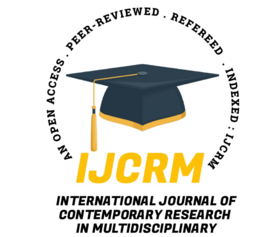International Journal of Contemporary Research In Multidisciplinary, 2025;4(4):275-281
Joshimath: Consequence of Human Disaster: A Case Study
Author Name: Aafrin Ayaz; Ashish Kumar Sharma; Altamash Ahmad;
Paper Type: case report
Article Information
Abstract:
The town of Joshimath in Uttarakhand is currently experiencing a severe geophysical and environmental crisis marked by land subsidence, structural damage, and mass displacement. This case study investigates the human-induced factors behind the disaster, primarily focusing on unregulated construction, hydroelectric projects, poor drainage systems, and unsustainable tourism in a geologically unstable region. Drawing on geological surveys, scientific reports, and historical data, the study reveals that Joshimath's location on ancient landslide debris and its proximity to seismic fault lines have been aggravated by government negligence, infrastructure overload, and unauthorized development. Despite early warnings from scientific committees, such as the Mishra Committee Report (1976), repeated disregard for environmental and structural safety measures has led to the current crisis. The paper calls for immediate and long-term mitigation strategies including relocation of residents, re-evaluation of development plans, ecological restoration, and strict enforcement of construction norms. The Joshimath disaster exemplifies the catastrophic consequences of ignoring environmental thresholds in fragile Himalayan ecosystems.
Keywords:
Disaster Management, Environmental Degradation, Land Subsidence, Joshimath, Hydropower, Sustainable Development
How to Cite this Article:
Aafrin Ayaz,Ashish Kumar Sharma,Altamash Ahmad. Joshimath: Consequence of Human Disaster: A Case Study. International Journal of Contemporary Research in Multidisciplinary. 2025: 4(4):275-281
Download PDF





